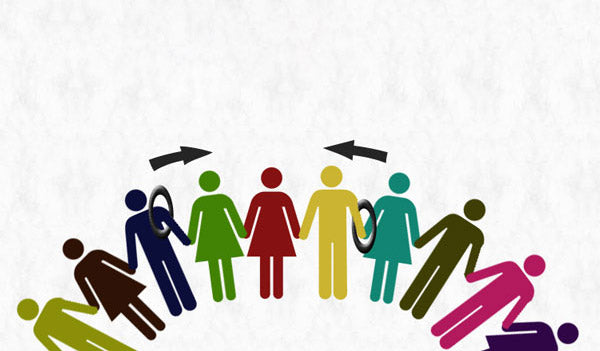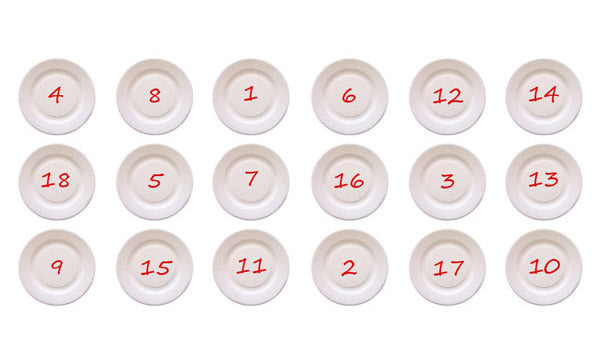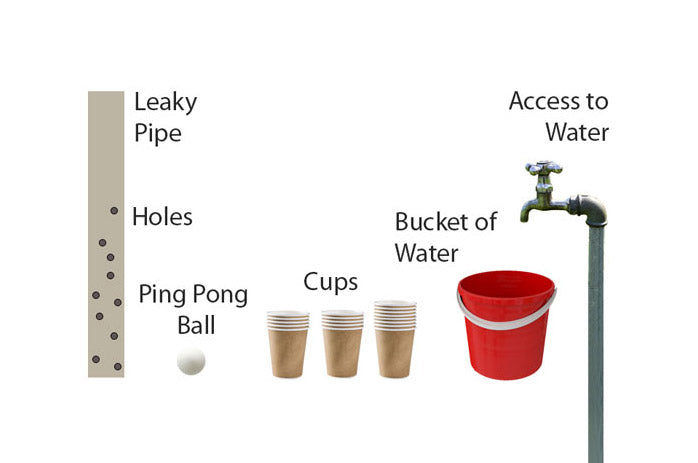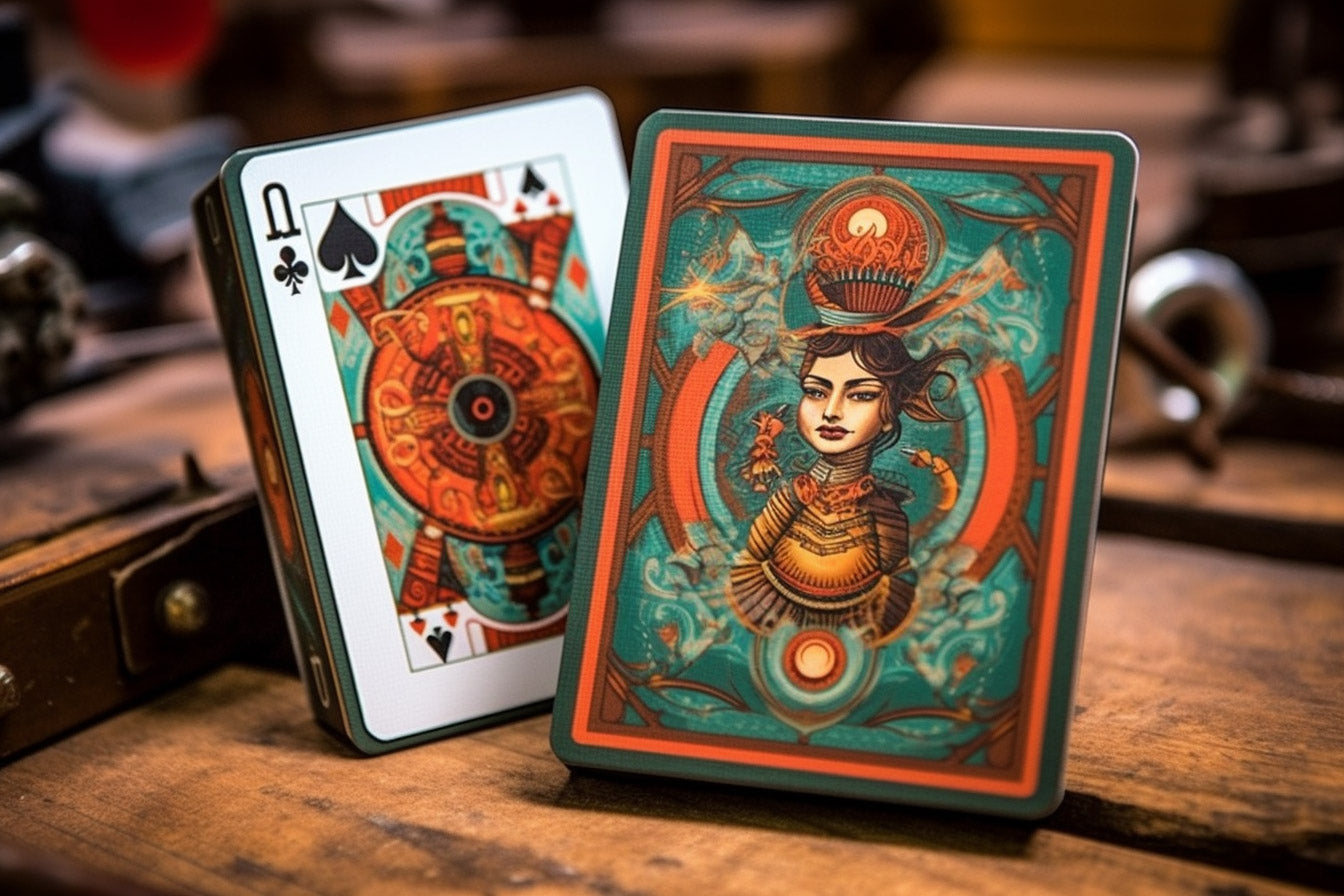Purpose
This is a great teambuilding exercise that helps to cover several areas on leadership, teamwork and problem solving. You can run it like a competitive game for a large group. Allow the delegates go through the exercise several times to see if they can become better at the task. In the process they can learn how to work as a team towards a common objective.
The task is also fun to perform so it can be used as an energiser or even as a fun exercise to run during seminars and conferences. It provides a shared experience and an opportunity for people to have a laugh while also being able to address subjects related to teams and task completion.
Objective
Pass a tyre around a circle as quickly as you can without unclasping your hands.
What You Need
- A large area so all delegates can stand in a circle and move safely.
- Two bicycle tyres.
- A blue thread and a red thread. Tie each around a tyre so they can be distinguished from each other. You can use any other methods so long as the two tyres can easily be distinguished from each other.
Setup
- Ask delegates to form a circle.
- Ask delegates to hold hands with the two people next to them so all hands are connected in a circle.
- Introduce the two tyres. Ask a person to unclasp his hand, place the tyre on his arm and then hold hands again. The tyre should now be hanging on the arm.
- Do this for both tyres at two locations in the circle that are opposite each other.
- Explain that the objective is to pass the tyre from one person to the next without unclasping any hands. In practice, this means that the tyre passes through arms and then a head followed by stepping into and then out of it and then it goes out of the head and moves to the other side.
- The two tyres should travel in opposite directions. In the process they will be crossing each other twice. The crossing can be more complicated so they must pay attention to this part.
- Once they are ready, ask them to start.
- Start the timer and time their performance.
- The first round used for familiarisation.
- Explain that there will now be two more rounds and they need to see if they can improve their performance each time.
- Explain the following;
- It is up to them how to choose the two starting points. This will come to define where the crossing takes place which in turn allows them to select who would stand at that position.
- The two starting point must always be opposite each other.
- The two tyres must always travel opposite each other.
- If they mix the tyres up, they should traverse the tyres back to where the mistake was originally made, correct the mistake and then resume. Hence, this can lead to a hefty time penalty so they should be vigilant to avoid it.
- They should treat it like a project.
- Allocate 10 minutes for brainstorming and planning.
- Ask them to get ready for the second round, start the timer and say START.
- After the second round, record the time and let them know how they have performed.
- Allocate another 10 minutes for planning based on how they did before.
- Go through the third and final round.
- Measure their time and let them know if they have been able to perform better than the last two rounds.
- Bring back everyone together and follow with a discussion.
Timing
Explaining the Exercise: 5 minutes
Activity: 10 minutes
Group Feedback: 10 minutes
Discussion
To Tutor: This team building exercise is ideal for exploring a number of topics such as management, delegation, problem solving and teamwork. Go through discussions considering the following questions to see what they thought of the exercise and their performance:
- Did they assign themselves a leader?
- Did the leader coordinate their tasks?
- Did they utilise different people’s strengths for specialisation? For example, those who need to handle the tyre crosses might need to be agile, fit or simply small.
- Did the team approach the problem systematically to sort out issues and weaknesses?
If this exercise was conducted as a game, what did the winning team do that led to their success?
Variations
- If you have a large number of delegates, you can run this exercise as a competition between teams. Each team should have at least 6 people so you need a minimum of 12 people for two competing teams. Simply ask the teams to go through the exercise. The objective is to see which team can finish the fastest. You can do the exercise 3 times (or more) so teams have a chance to learn and become better at the task. You can either average the scores to find who performed fastest or simply use the last result as the definitive score.
- You can also choose the teams based on some amusing criteria such as teachers versus students, parents versus children, people who work on the ground floor versus people who work on the first floor, girls versus boys, people who wear glasses versus those who don’t wear glasses (this can be seen as unfair, but that just adds to the challenge for bookie types to prove themselves!)
Ceremonially give a prize to the winning team (something that all can benefit from such as a box of chocolate).
Soft Skills Training Materials
Get downloadable training materials
Online Train the Trainer Course:
Core Skills
Learn How to Become the Best Trainer in Your Field
All Tags
Training Resources for You

Course Design Strategy
Available as paperback and ebook

Free Training Resources
Download a free comprehensive training package including training guidelines, soft skills training activities, assessment forms and useful training resources that you can use to enhance your courses.

Our Comprehensive Guide to Body Language

Train the Trainer Resources
Get Insights - Read Guides and Books - Attend Courses
Training Materials
Get downloadable training materials on: Management Training, Personal Development, Interpersonal Development, Human Resources, and Sales & Marketing














Leave a comment
All comments are moderated before being published.
This site is protected by hCaptcha and the hCaptcha Privacy Policy and Terms of Service apply.